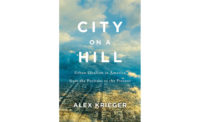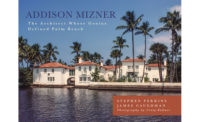Iconic is an annoying word; it inspires skepticism.
And that may be the point.
In his new book, longtime British design journalist Dominic Bradbury presents 100 residential interiors to showcase the work of prominent architects and designers, as well as artists, product designers, couturiers, and “influencers.”
The interiors encompass a wide variety of styles from Neoclassical to Art Nouveau, Arts and Crafts, Art Deco, Mid-century Modern, Postmodern, Minimalist, and more. With backing from his publisher, Bradbury had the luxury of hiring the photographer Richard Powers to shoot 600 pictures for the book, two thirds of the total.
So what makes interiors “iconic” to Bradbury? “Spaces that sum up a design movement or define a particular style, or suggest a fresh and innovative approach to interior space that resounds through the years,” he writes. “These houses and apartments are essential reference points in the ongoing story of interior design.”
He naturally includes Peter Behrens’s own house of 1901 in Darmstadt, Germany; Frank Lloyd Wright’s Hollyhock House of 1921 in Los Angeles; and Hans Scharoun’s “Haus Schminke” of 1939 in Germany. But where are Victor Horta, Le Corbusier, or Mies van der Rohe? Not to mention Philip Johnson or Louis Kahn? Ultimately, of course, the author’s choices are subjective. Still, some omissions are particularly mystifying. Why include Adolf Loos’s Steiner House of 1910 in Vienna but neglect Otto Wagner and Josef Hoffmann?
Bradbury’s other books on architecture and design include The Iconic House: Architectural Masterworks Since 1900 (2009). This explains why Fallingwater is missing from the new volume—it’s in his previous book.
The format of both are the same, 8 by 9 inches. “It was a conscious decision to make [the book] more affordable,” Bradbury explains. Yet it is frustrating not to have more images of the projects and to have so many be so small, considering the goal of having original photography: there are often as many as four photos on a page. Perhaps it would have been better to focus on fewer spaces and show more of each.
Women designers don’t make much of an impact in Bradbury’s world. Denise Scott Brown and Lina Bo Bardi are the only two female architects. Where are Julia Morgan, Billie Tsien, and designer/architect Eileen Gray? Among all the decorators, under a dozen are women—Edith Wharton, Madeleine Castaing, and Andrée Putman among them.
Helpfully, the author has compiled a gazetteer of 18 properties open to visitors, however, many of which should not be missed. On this list are Edwin Lutyens’s Castle Drogo in England, Bo Bardi’s Glass House in Brazil, Eliel Saarinen’s Hvittrask in Finland, and Alvar Aalto’s Maison Louis Carré in France, along with Henry van de Velde’s Villa Esche in Germany and Brinkman & Van der Vlugt’s Sonneveld House in the Netherlands.
While we’re stuck inside because of the pandemic, it’s a source of fun to contemplate visits to such houses—and to start Zoom arguments about which is and isn’t truly iconic.






Post a comment to this article
Report Abusive Comment